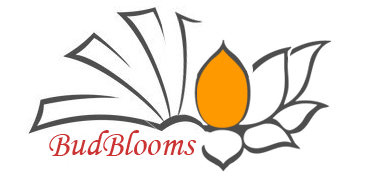Books
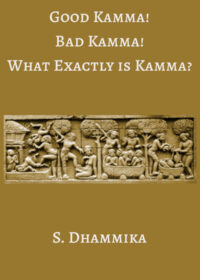
Good Kamma! Bad Kamma! What Exactly Is Kamma?
Today, the information in most books on kamma and rebirth by Buddhist writers are actually an amalgam of ideas the Buddha taught together with ones that developed sometimes centuries after his passing. And it is all presented as if it were the words and ideas of the Buddha himself. This would be equivalent to quoting Aquinas or Kierkegaard and attributing it to Jesus. Often, what is presented as the Buddha’s teaching of kamma and rebirth is actually the ideas from the Milindapañha written perhaps 400 or 500 years after the Buddha, of Buddhaghosa who lived some 900 after him, or Anuruddha, the author of the Abhidhammatthasaṅgaha, who lived about 1400 years after him. This is not to say that these later ideas are necessarily wrong. Some of them help to clarify things the Buddha said or take them to their logical conclusions. But they are all the product of scholarly speculation and hypothesizing, while what the Buddha taught was the outcome of his awakening experience. Thus this book will look at kamma and rebirth based on how these doctrines are presented in the Pāḷi Tipiṭaka, the oldest and most authentic record we have of the Buddha’s teaching.
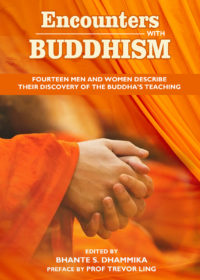
Encounters with Buddhism
Fourteen writers here describe how they came to be Buddhists. Men and women of different nationalities: each tells the story of his or her encounter with Buddhism and of how they became a Buddhist. Together they form an interesting and significant piece of documentation of what are undoubtedly some important ethical, religious and philosophical trends among Buddhists in the latter half of the twentieth century.
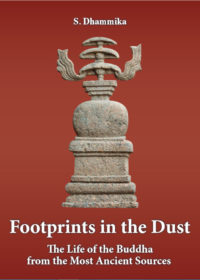
Footprints in the Dust: The Life of the Buddha from the Most Ancient Sources
What was the Buddha like as a human being? How did he relate to others? With great care and an eye for detail, Venerable Dhammika pieces together the life events we can ‘read’ from very early texts. The result is a truly authoritative biography. It shows that as a man, as well as a teacher, the historical Buddha was remarkable indeed. The chapter headings are refreshingly original: a day in the life of, his humour, his debating style, his background. I really enjoyed thinking about Gotama Buddha simply as a person—and clearly an extraordinary one, as Ven Dhammika shows us. I recommend this book to anyone who would like a down-to-earth, accurate and readable appraisal of the founder of this great world religion, seen through modern eyes.

The Broken Buddha Twenty Years On: Reviews, Personal Communications and Blog Comments.
When I published my book The Broken Buddha in 1990, I hoped it would stimulate debate and discussion amongst Western Buddhists about the course Western Buddhism should take, or not take. I received a few emails and letters about it but no more than a dozen, and somewhat disappointed, I left it at that and got on with my writing. Then in 2017, someone previously unknown to me, contact me and after saying how much he appreciated the book, told me that he had culled over a hundred assessments of and comments about the book from the internet, magazines, Buddhist newsletters and journals, and asked me if I would like to see them. I said I would and was quite surprised that the book had indeed triggered a great deal of debate, albeit quite unknown to me. Recently I thought it might be worthwhile to publish this material, so I have I added a few extracts from personal correspondence and the whole can be read below. Sometime in the future I will write a reply to my critics.

Yellow Robe, Red Flag A short biography of Rahul Sankrityayan
Most of this short book was written between 1990 and 1991 with the intention of publishing it for Rahul Sankrityayan’s birth centenary in 1993. However, I misplaced the manuscript and only rediscovered it amongst my late mother’s papers in April of this year, 2021. I had sent a copy to her but completely forgot having done so. At the time of writing the book, the only material in English I had at my disposal was Prabhakar Machwe’s Makers of Indian Literature; Rahul Sanskrityayan, Rahul’s Selected Essays, and the series of articles he wrote about his discoveries in Tibet for the Journal of the Bihar and Orissa Research Society. My other sources were Rahul’s friends and colleagues, including Bhadanta Ananda Kausalyayan, all of whom I had gone to India twice specifically to meet. I had also arranged to interview his wife Kamala but to my lasting regret the meeting had to be cancelled at the last moment. As soon as I rediscovered my manuscript, I obtained Alaka Atreya Chudal’s 2016 comprehensive biography of Rahul and have used it to correct some dates and the sequence of some events, and have also included a few episodes in Rahul’s life that I was previously unaware of
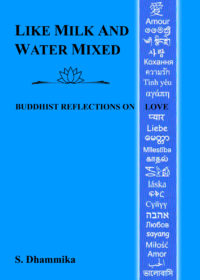
Like Milk and Water Mixed
Love is not necessarily an easy subject to write about. Studies of the subject by philosophers, psychologists and sociologists usually focus on one or another of its forms, most commonly romantic or conjugal love, and often use the word “love” without making it clear what is meant by it. Popular writing and discourse on the subject characteristically get lost in flood of clichés and ecstatic claims that evoke uplifting feelings but do not necessarily encourage realistic thinking. I have tried to define love in a way that will be recognisable to most people and which encompasses most of the experiences usually thought of as love. I had originally intended to write mainly about universal or brotherly love, what the Buddha called mettā. But it soon became clear that this highest of loves is intimately connected with and perhaps necessarily preceded by other types. It is like pulling a thread out of a tapestry. As it comes it draws out so many other threads with it. Thus I was eventually led to explore six different loves. I could have included other types as well but decided to limit myself to those loves about which the Buddha had something to say or which are relevant to practising Buddhism.
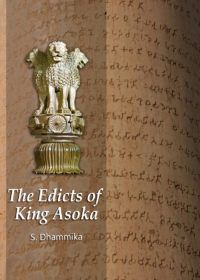
The Edicts of King Asoka
This rendering of King Asoka’s Edicts is based heavily on Amulyachandra Sen’s English translation, which includes the original Magadhi and a Sanskrit and English translation of the text. However, many parts of the edicts are far from clear in meaning and the numerous translations of them differ widely. Therefore, I have also consulted the translations of C. D. Sircar and D. R. Bhandarkar and in parts favored their interpretations. Any credit this small book deserves is due entirely to the labors and learning of these scholars.
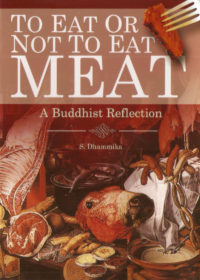
To eat or Not Eat Meat, A Buddhist Reflection
An issue that has long divided Buddhists is whether or not meat-eating is consistent with the Dhamma, the teachings of the Buddha. Both ancient and modern scholars have debated the matter, sometimes with considerable rancour. In this book a well-known Buddhist monk revisits the various arguments for and against meat-eating and examines them from a very different perspective. In doing so he also dispels several common misconceptions about Buddhism, highlights some rarely discussed problems associated with being vegetarian, and details some of the good reasons for becoming one. This book will make you look at Buddhism very differently. It might make you look at your next meal very differently too.
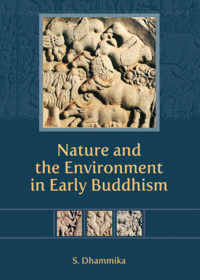
Nature and the Environment in Early Buddhism
The first attempt to identify the plants in the Tipiṭaka was made by Robert Childers in his A Dictionary of the Pali Language of 1876. Childers gave about 165 plant names and provided the Linnaean nomenclature for most of these. However, more than half these names are from Pali works composed in Sri Lanka and are not mentioned in the Tipiṭaka itself. Rhys Davids and Stede’s Pali English Dictionary published between 1921–25, includes about 420 Pali plant names with the botanical names for about a third of these. Included also are about 185 animal names of which only eight include the zoological names. It is unclear what authority Rhys Davids and Stede used for the nomenclature they did give but they seem to have relied heavily on Monier-William’s Sanskrit English Dictionary. A thorough compilation of material on flora, fauna and the environment from the Pali Tipiṭaka is more than justified. Despite being a rich source of information on these subjects Indian scholars have largely ignored Pali literature.
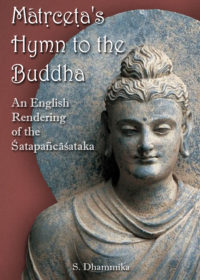
Mātṛceṭa’s Hymn to the Buddha, An English Rendering of the Śatapañcāśataka
For centuries people have stood in awe of the Buddha and his attainments and have strived to express their feelings in stone and bronze and with brush and ink. Some have been moved by what the Buddha said, its logical consistency, its scope and its humanism. Others have been inspired by the personality of the Lord himself, his manner and conduct, and even his physical form. The joyful faith and appreciation that is evoked on recollecting the Buddha’s personality and singing his praise gives such people the strength they need to walk the Path. For them the Dhamma comes alive through the life and example of the Buddha. Such a person was the poet Mātṛceṭa. He was born in India in about the first century A.D., and was converted from Hinduism to Buddhism by the great philosopher Aryadeva. He wrote about a dozen works, some of such beauty that he came to be regarded as one of India’s greatest poets.
